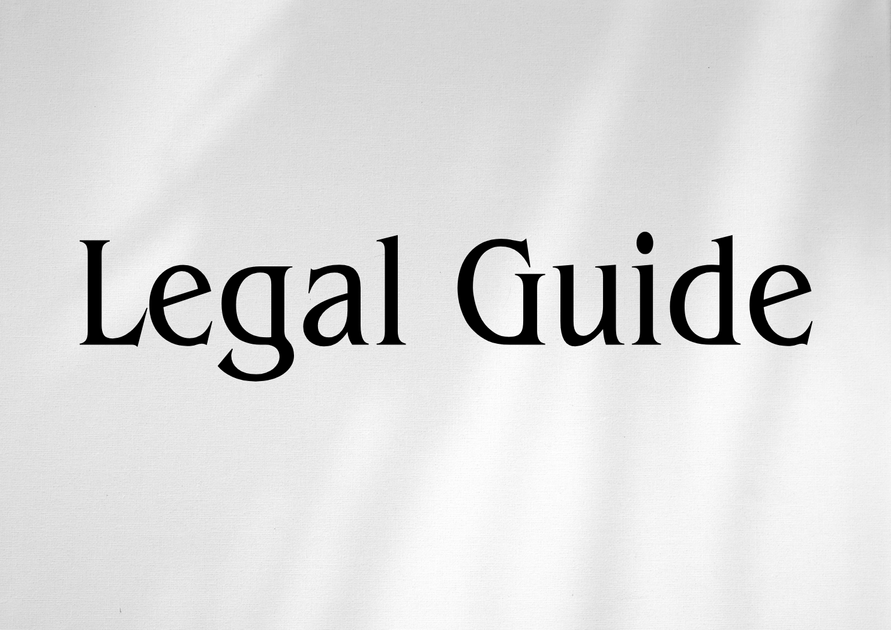Introduction: The Critical Role of Air Accident Investigation Procedures in the UAE
The United Arab Emirates, recognized as a global aviation hub, places paramount importance on the safety, accountability, and regulation of its skies. With the nation’s airports among the world’s busiest, ensuring robust air accident investigation procedures under UAE law is not just a legal requirement—it’s a strategic priority.
Recent years have witnessed significant updates to the federal legal framework governing the investigation of civil aviation accidents and incidents, reflecting international standards and addressing new complexities in air traffic. The introduction of Federal Decree Law No. (20) of 2022 on the Regulation of Civil Aviation represents a pivotal moment, updating investigative procedures, compliance mandates, reporting mechanisms, and the roles of all stakeholders involved.
Understanding these procedures is indispensable for airline operators, airport authorities, business executives, HR professionals, and legal practitioners navigating the UAE’s regulatory environment. This article delivers a consultancy-grade analysis of the current air accident investigation framework, uncovers practical insights, and offers compliance strategies to ensure your organization meets the highest legal and safety standards.
Table of Contents
- Overview of UAE Air Accident Investigation Law
- Legal Framework and Recent Updates
- Detailed Investigation Procedures
- Roles and Responsibilities of Key Stakeholders
- Compliance Requirements and Best Practices
- Case Studies and Practical Scenarios
- Risks, Penalties, and Mitigation Strategies
- Forward-Looking Perspective and Recommendations
Overview of UAE Air Accident Investigation Law
At the core of the UAE’s aviation regime is the mandate to investigate every incident or accident with the utmost rigor and neutrality. Investigation procedures have evolved in harmony with global benchmarks, particularly those set out by the International Civil Aviation Organization (ICAO), which the UAE is a signatory to.
The UAE General Civil Aviation Authority (GCAA) is empowered to investigate all civil aviation occurrences on UAE territory or involving UAE-registered aircraft, as specified in Federal Decree Law No. (20) of 2022 and its Executive Regulations. This legal foundation is supplemented by Ministerial Resolutions and Cabinet Decisions that detail operational aspects, reporting timeframes, and coordination with international bodies. For example, Cabinet Resolution No. 43 of 2018 clarified certain procedural elements previously absent from older frameworks.
Key Objectives of the UAE Air Accident Investigation Regime
- Determining the causes and contributing factors of air accidents to prevent recurrence;
- Fulfilling the UAE’s international obligations for transparent, objective investigations;
- Protecting evidence integrity, preserving data, and ensuring fair treatment for affected parties;
- Enabling timely reporting and corrective action to maintain public and global trust in UAE aviation.
Legal Framework and Recent Updates
Governing Legislation and Authorities
The principal legislative instrument is Federal Decree Law No. (20) of 2022 on the Regulation of Civil Aviation. It repealed Federal Law No. 20 of 1991 and superseded prior Cabinet and Ministerial Resolutions. The Executive Regulations, published in the Federal Official Gazette, expand on notification, investigation, and reporting duties.
Supporting laws include:
- Cabinet Resolution No. 43 of 2018 (Regulating Air Accident Investigation Procedures);
- Ministerial Resolution No. 501 of 2015 (On Accident Reporting Channels);
- Federal Law No. 2 of 2015 (On Combating Discrimination and Hate Crimes) – indirectly, where aviation security is concerned.
The authority for initiating, managing, and concluding investigations lies with the GCAA’s Air Accident Investigation Sector (AAIS). In cases with international resonance, such as accidents involving foreign carriers, protocols aligned with ICAO Annex 13 (Aircraft Accident and Incident Investigation) are rigorously applied.
Comparative Table: Major Legislative Updates
| Aspect | Old Law (pre-2022) | Current Law (2022–present) |
|---|---|---|
| Primary Authority | GCAA, with fixed reporting lines | AAIS (enhanced independence and investigative mandate) |
| Reporting Timelines | Within 48 hours | Mandatory immediate notification, strict 24-hour reporting |
| International Cooperation | Ad hoc, limited provisions | Harmonized with ICAO Annex 13, full participation of foreign authorities |
| Confidentiality | General confidentiality clauses | Strict data protection, regulated witness and crew statements |
| Sanctions | Fines or administrative censure | Escalating fines, suspension of licenses, potential criminal liability |
Detailed Investigation Procedures under UAE Law
Step 1: Mandatory Reporting and Notification
As mandated by Article 54 of Federal Decree Law No. (20) of 2022, any “responsible party,” including commanders, operators, or airport staff, must immediately notify the GCAA upon the occurrence of an accident or serious incident. Notification must be clear, concise, and delivered via official communication lines as outlined in Ministerial Resolution No. 501 of 2015. Failure to adhere to this requirement exposes organizations and individuals to substantial penalties.
Step 2: Evidence Protection and Scene Management
The immediate securing of the accident scene is a legal imperative. Article 56 of the Decree Law establishes protected status for evidence—including black box data, wreckage, electronic records, and personal effects. Tampering or unauthorized access is subject to severe punitive action.
Step 3: Preliminary Fact-Finding
The AAIS will deploy investigators to conduct an on-site evaluation, establish facts, and gather witness statements. This phase is time-bound and must be executed in accordance with ICAO standards, allowing simultaneous cooperation with police, rescue personnel, and airport staff. All parties are legally obligated to cooperate fully with investigators, as stipulated in Article 58.
Step 4: Formal Investigation and Reporting
The formal investigation may involve independent experts, technical advisors, and, where warranted, participation by foreign investigative authorities. The AAIS has the sole mandate to draw conclusions about cause and responsibility. The resulting report is then submitted to the Ministry of Justice, GCAA, and relevant stakeholders, as required under Article 61.
Step 5: Recommendations and Safety Actions
Upon concluding the investigation, the AAIS will issue safety recommendations mandatory for operators, airport management, or manufacturers to adopt. Non-execution of safety instructions, as stipulated in Cabinet Resolution No. 43 of 2018, can result in administrative or criminal penalties.
Process Flow Diagram Suggestion
It is recommended to place a process flow diagram here, visually mapping the steps from immediate accident notification to final report issuance. This will enhance clarity for compliance teams.
Roles and Responsibilities of Key Stakeholders
UAE General Civil Aviation Authority (GCAA) and AAIS
- Primary Investigative Authority: Initiates, manages, and concludes investigations; issues safety recommendations.
- Reporting and Disclosure: Maintains communication with ICAO, foreign authorities, and national institutions.
- Ongoing Oversight: Audits compliance with post-incident safety actions.
Aircraft Operators and Airlines
- Immediate notification responsibility;
- Full cooperation with investigators;
- Swift execution of corrective safety measures;
- Internal compliance and transparency with the AAIS.
Airport Personnel and Emergency Responders
- Supporting evidence preservation;
- Ensuring timely access for investigating teams;
- Adhering to procedural checklists for accident response.
Legal Representatives and Insurers
- Protecting client rights while enabling investigative transparency;
- Coordinating claims and legal notifications in line with federal requirements.
Victims, Families, and the Public
- Receiving clear, timely information in accordance with confidentiality and privacy protections;
- Right to representation during investigatory interviews where applicable.
Compliance Requirements and Best Practices
Practical Steps for Compliance with UAE Air Accident Investigation Procedures
- Establish an internal reporting protocol that aligns with GCAA notification standards;
- Train all operational and managerial staff in accident response procedures, including evidence preservation;
- Appoint a dedicated legal and compliance officer for each shift in aviation-sensitive roles;
- Maintain robust records of communication, notification, and internal investigations for auditing purposes;
- Engage proactively with legal advisors to review updates to GCAA and Ministry of Justice regulations;
- Adopt digital tools to streamline reporting, tracking, and documentation in all incident-related matters.
Compliance Checklist (Suggested Visual Placement)
| Compliance Item | Status | Responsible Officer |
|---|---|---|
| Immediate GCAA Notification System | Implemented/Not Implemented | Safety Manager |
| Staff Training on Evidence Preservation | Ongoing/Annual/None | Training Coordinator |
| Internal Incident Review Board | Operational/Planned/Absent | Legal Counsel |
| Updated SOPs Reflecting 2022 Law | Yes/No | Compliance Officer |
Key Pitfalls to Avoid
- Failure to report incidents within the prescribed 24-hour window;
- Inadequate scene management leading to evidence loss;
- Non-cooperation with the AAIS, even in peripheral matters;
- Reliance on outdated procedures or checklists not aligned with latest regulations.
Case Studies and Practical Scenarios
Case Study 1: Timely Notification Prevents Liability
A UAE-registered carrier experienced a runway excursion at a regional airport. By acting in strict accordance with the 24-hour reporting rule, promptly notifying the GCAA, and facilitating scene access, the operator avoided harsh regulatory penalties that might otherwise have ensued. As a result, its proactive compliance was cited as a benchmark in AAIS annual reporting.
Case Study 2: Consequences of Delayed Reporting
Conversely, a foreign charter operator delayed notification of a minor collision during taxiing. The delay resulted in an administrative fine, suspension of operating privileges, and mandatory retraining for ground staff. The incident underscores the non-negotiable nature of timely reporting.
Hypothetical Scenario: International Investigations
A UAE-flagged aircraft is involved in an accident abroad. Under the bilateral aviation agreement, the foreign investigative authority leads, but the GCAA participates as per ICAO Annex 13. Failure by the UAE operator to cooperate could expose the carrier to international legal claims and possible GCAA sanctions upon return to UAE jurisdiction.
Visual Placement Suggestion
In this section, an illustrative table comparing penalties for non-compliance across different cases would aid readers in understanding real-world implications.
Risks, Penalties, and Mitigation Strategies
Sanctions for Non-Compliance
| Offense | Penalty (2022 Law) | Mitigation Strategy |
|---|---|---|
| Failure to report within 24 hours | Up to AED 500,000 fine; license suspension | Implement automated reporting systems |
| Tampering with evidence | Criminal prosecution; indefinite suspension | Mandatory training; clear scene management SOPs |
| Lack of cooperation with investigators | Administrative fines; operator restrictions | Legal briefing sessions for all staff |
| Ignoring safety recommendations | Repeated fines; operational audits | Assign compliance champions; monitor corrective actions |
Proactive Risk Management for Organizations
- Regularly update incident response plans in line with new GCAA directives;
- Conduct mock drills and scenario-based training to stress-test compliance procedures;
- Engage in industry forums and knowledge exchanges to remain informed of future legal changes;
- Review insurance policies to ensure full coverage for investigation-related liabilities;
- Secure independent legal review of annual compliance protocols.
Forward-Looking Perspective and Recommendations
The legal environment for air accident investigation in the UAE will continue to evolve in response to technological advancements, increasing air traffic, and the nation’s ambition to lead in aviation safety benchmarks. Federal Decree Law No. (20) of 2022 signifies a shift towards stricter oversight, enhanced transparency, and international alignment.
Organizations operating in the UAE must prioritize the establishment of robust compliance architectures, invest in continuous training, and foster a culture of immediate, transparent reporting. The integration of digital tools and close cooperation with legal advisors will underpin future-ready compliance in this sector.
To remain proactive, businesses are urged to:
- Monitor legislative updates from the UAE Ministry of Justice and GCAA;
- Include air accident investigation procedures in executive and HR training curriculums;
- Conduct periodic legal reviews to ensure complete alignment with the latest laws, particularly as secondary regulations are updated beyond 2025;
- Develop an incident response culture that transcends mere legal compliance and embraces international best practices.
Conclusion
Air accident investigation procedures under UAE law are no longer limited to technical compliance; they represent a cornerstone of risk management, corporate reputation, and sector sustainability. The regulatory trends of 2025 and beyond point towards more stringent requirements and higher expectations for investigative transparency.
By understanding the current law in depth and adopting best-in-class compliance solutions, stakeholders can confidently navigate the UAE’s sophisticated air safety regime. Legal counsel and operational leaders must work together to ensure that, when incidents occur, the response is swift, collaborative, and fully compliant—a hallmark of world-class aviation governance.




